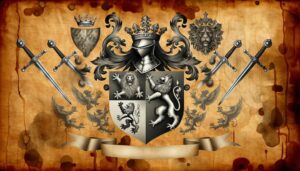Decoding Satanic Symbols and Their Meanings in Satanism
Satanism employs several potent symbols, each steeped in historical and philosophical significance. The inverted pentagram symbolizes rebellion and subversion, shifting from protection to defiance.
The Sigil of Baphomet, adopted by the Church of Satan, encapsulates human nature, unity, and opposition to religious dogma. The Leviathan Cross, rooted in alchemical traditions, represents balance, transformation, and personal empowerment.
Other symbols, like the Unicursal Hexagram and the Black Sun, underscore themes of unity, hidden knowledge, and cosmic cycles. Each emblem embodies a complex interplay of esoteric meanings that challenge conventional norms and promote self-empowerment.
To further understand these intricate symbols, explore their rich histories and modern interpretations.
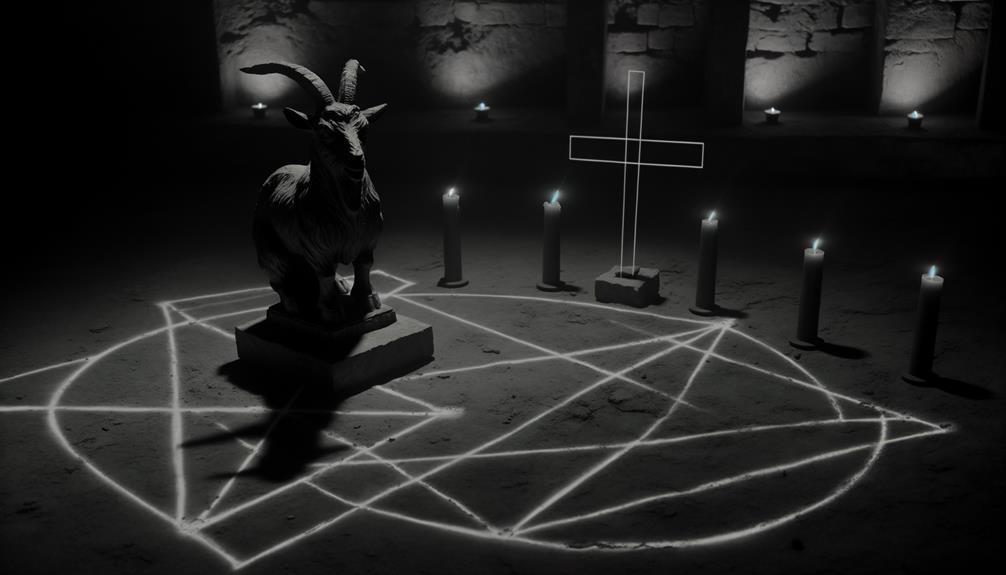
Key Takeaways
- The Inverted Pentagram symbolizes rebellion, subversion, and defiance against established norms in Satanism.
- The Sigil of Baphomet represents personal empowerment, rational inquiry, and rebellion against religious dogma.
- The Leviathan Cross signifies balance between physical and spiritual realms, symbolizing transformative power and personal empowerment.
- The Unicursal Hexagram emphasizes unity, integration of opposing forces, and harmony within chaos in Satanic philosophy.
- The Black Sun embodies hidden knowledge, transformation, and cosmic balance, rooted in ancient and modern occult traditions.
Inverted Pentagram
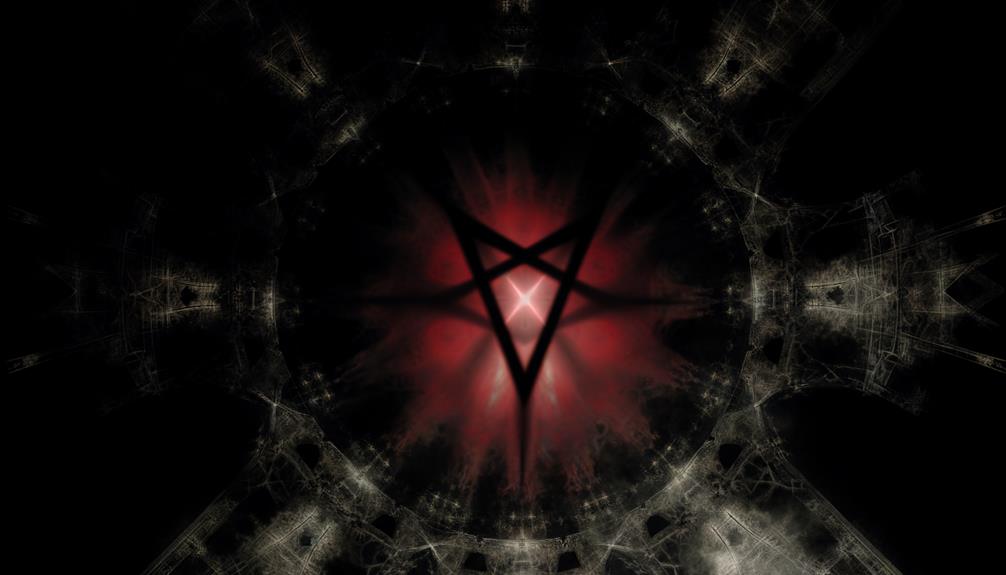
The inverted pentagram, often associated with Satanism, is a symbol that inverts the traditional five-pointed star, placing two points upward to represent the horns of a goat. This alteration shifts its meaning from a symbol of protection and balance in various pagan traditions to one of rebellion and subversion.
Historically, the inverted pentagram has been employed to signify the antithesis of the sacred, challenging established moral and spiritual norms. Its adoption by modern Satanic groups underscores a deliberate inversion of Christian symbols, aiming to provoke and question societal conventions.
The inverted pentagram's stark geometry and powerful connotations make it a potent emblem in the context of esoteric and occult practices, embodying themes of power, defiance, and esoteric knowledge.
Sigil of Baphomet
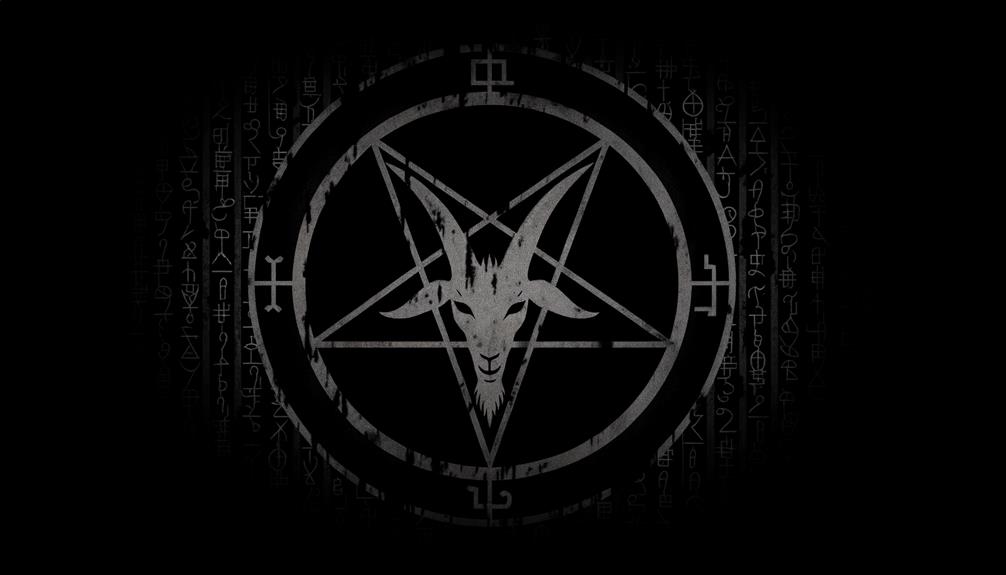
The Sigil of Baphomet, often regarded as the primary emblem of Satanism, encapsulates a rich tapestry of historical significance and symbolic elements. Its origins trace back to medieval and esoteric traditions, where it was adopted and adapted by various occult groups.
Modern interpretations continue to evolve, reflecting diverse understandings and applications within contemporary Satanic practices.
Historical Significance
Emerging in the 19th century, the Sigil of Baphomet has evolved into a prominent symbol within modern Satanism, reflecting a complex interplay of historical, religious, and cultural influences. Initially linked to medieval European folklore, the symbol was later appropriated by occultist Éliphas Lévi, who associated Baphomet with mystical traditions.
Its adoption by the Church of Satan in the 1960s solidified its modern identity, symbolizing rebellion against conventional religious norms. The sigil's historical significance can be examined through various lenses:
- Medieval European folklore and demonology
- Éliphas Lévi's occult interpretations
- Adoption by the Church of Satan in the 20th century
- Rejection of traditional religious values
This multifaceted history underscores its enduring impact and evolving meaning in contemporary Satanism.
Symbolic Elements
Various symbolic elements within the Sigil of Baphomet contribute to its profound and multifaceted meaning in modern Satanism. The pentagram, replete with specific features, serves as the foundation of the sigil. Each point of the pentagram represents specific aspects of human nature and the cosmos. The inclusion of a goat's head symbolizes defiance, fertility, and virility, drawing from ancient pagan traditions. Enclosing the pentagram and goat's head is a circle, denoting unity and wholeness. The Hebrew letters at each point of the star spell out "Leviathan," a creature symbolizing chaos and the abyss.
| Element | Symbolism |
|---|---|
| Pentagram | Human nature, cosmos |
| Goat's Head | Defiance, fertility, virility |
| Circle | Unity, wholeness |
This intricate composition articulates the core tenets of modern Satanism.
Modern Interpretations
Modern interpretations of the Sigil of Baphomet reflect a synthesis of historical symbolism and contemporary philosophical paradigms within Satanism. This emblem, often associated with the Church of Satan, embodies various principles:
- Symbolic Duality: The goat head within an inverted pentagram signifies the rejection of conventional religious dogma and the embrace of individualism.
- Empowerment: It serves as a representation of the self as a god, emphasizing personal autonomy and self-determination.
- Rational Inquiry: Aligns with a commitment to scientific skepticism and critical thinking, distancing itself from supernaturalism.
- Rebellion: Acts as a counter-cultural icon, challenging societal norms and provoking thought about freedom and authority.
These facets underscore the modern evolution of the Sigil of Baphomet within contemporary Satanic thought.
Leviathan Cross
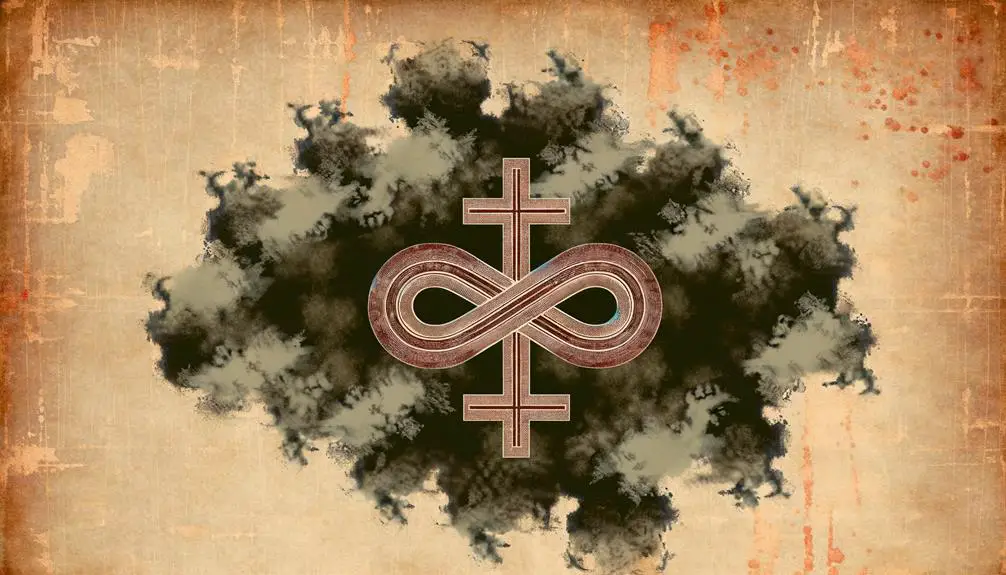
The Leviathan Cross, also known as the Satanic Cross, holds significant historical and symbolic value within Satanism.
Originating from alchemical symbols, it represents the duality of existence and infinity.
Its adoption and adaptation by modern Satanist groups underscore its multifaceted interpretations, including rebellion against conventional religious norms.
Historical Origins
The Leviathan Cross, often considered a symbol of Satanism, traces its historical origins to the alchemical practices and iconography of the early modern period. This emblem, also known as the Cross of Leviathan or the Sulfur Cross, emerged as a representation of sulfur in alchemy, one of the three essential elements in the practice.
Its design, featuring a double cross over an infinity symbol, has deep-rooted connections to esoteric and occult traditions that predate its modern associations with Satanism.
- Early Modern Alchemy: Integral role in the development of the Leviathan Cross.
- Symbol of Sulfur: Represented one of the principal substances in alchemical processes.
- Esoteric Significance: Utilized in various occult traditions.
- Pre-Satanism Usage: Predates modern Satanic iconography.
Symbolic Interpretations
Building upon its historical origins, the Leviathan Cross has evolved to encompass a variety of symbolic interpretations within different esoteric and philosophical frameworks. Primarily associated with Satanism, it is often viewed as a representation of balance between the physical and spiritual domains.
The horizontal infinity symbol underpins notions of eternity and the cyclical nature of existence, while the vertical cross signifies the material world. In Alchemy, it symbolizes sulfur, indicative of the transformative power of fire and the soul.
Some interpret it as a sign of personal empowerment and rebellion against dogmatic constraints. Therefore, the Leviathan Cross serves as a multifaceted emblem, open to diverse and complex interpretations that extend beyond its initial satanic connotations.
The Unicursal Hexagram
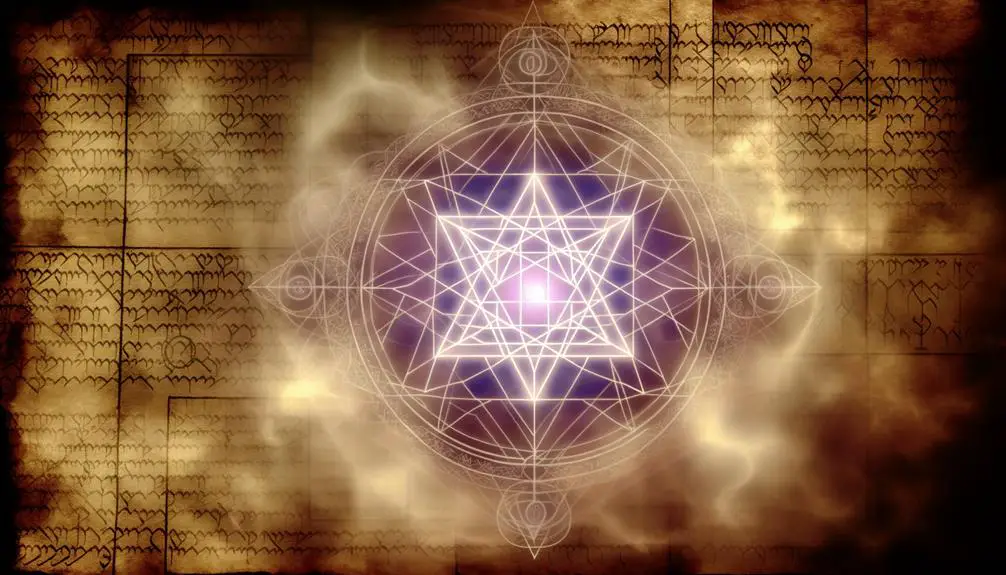
Among the various symbols associated with Satanism, the unicursal hexagram stands out for its unique geometric properties and esoteric significance. Unlike the traditional hexagram, the unicursal variant can be drawn in one continuous line, symbolizing the unity of opposites and the seamless interplay between different domains of existence.
This symbol is often adopted for its perceived ability to represent balance and harmony within the chaotic framework of Satanic philosophy.
Key aspects of the unicursal hexagram include:
- Geometric Uniqueness: One continuous line signifies unity and wholeness.
- Esoteric Meaning: Represents the integration of opposing forces.
- Occult Adoption: Frequently used by occultists due to its powerful symbolism.
- Philosophical Implications: Emphasizes balance within chaos, a core tenet of Satanic thought.
The Black Sun
The Black Sun, a symbol often associated with esoteric and occult traditions, warrants a thorough examination of its historical origins, which are rooted in ancient Germanic and Nordic mythology.
This symbol's multifaceted interpretations offer insights into its perceived representations of power and mysticism.
In addition, its appropriation in modern cultural contexts underscores a complex legacy that intersects with both contemporary occult practices and extremist ideologies.
Historical Origins Explained
Tracing the historical origins of the Black Sun reveals a symbol deeply intertwined with esoteric and occult traditions across various cultures. This enigmatic emblem, often portrayed as a sun with intricate, radiating patterns, has roots in ancient mythology and alchemy.
Its presence is noted in:
- Ancient Norse Mythology: Associated with the concept of a hidden or dark sun in esoteric beliefs.
- Alchemical Texts: Symbolizing the nigredo or black phase of alchemical transformation.
- Germanic Paganism: Representing cycles of destruction and rebirth.
- Nazi Occultism: Adopted by the SS as a mystical symbol of Aryan heritage and power.
Each cultural context imbues the Black Sun with distinct meanings, reflecting its complex and multifaceted historical evolution.
Symbolic Interpretations Analyzed
Building upon its historical origins, the Black Sun's symbolic interpretations reveal a complex tapestry of meanings that vary significantly across different cultural and esoteric contexts.
In esoteric traditions, the Black Sun often symbolizes hidden knowledge, representing the pursuit of enlightenment through darkness. Its depiction in alchemical texts suggests transformation and rebirth, akin to the alchemical sun that transmutes base metals into gold.
Conversely, some occult traditions link the Black Sun with destructive and regenerative cycles in nature. Within certain neo-pagan and occult circles, it is perceived as a symbol of inner power and cosmic balance.
These diverse interpretations highlight the Black Sun's multifaceted nature, underscoring its significance as a potent and enigmatic symbol in various mystical doctrines.
Modern Cultural Impact
Modern interpretations of the Black Sun have permeated various cultural spheres, influencing contemporary art, literature, and even political ideologies. This symbol, often associated with esoteric and occult traditions, has been appropriated in multiple contexts, reflecting a range of meanings and implications.
- Art: Contemporary artists utilize the Black Sun to evoke themes of mysticism and existential exploration.
- Literature: Authors incorporate the symbol to deepen narrative layers, often invoking its historical and metaphysical connotations.
- Political Ideologies: Extremist groups have co-opted the Black Sun, imbuing it with controversial and radical ideologies.
- Pop Culture: The symbol appears in films, music, and video games, often as a representation of dark forces or hidden knowledge.
Such diverse applications underscore the Black Sun's enduring and multifaceted impact on modern culture.
The Goat of Mendes
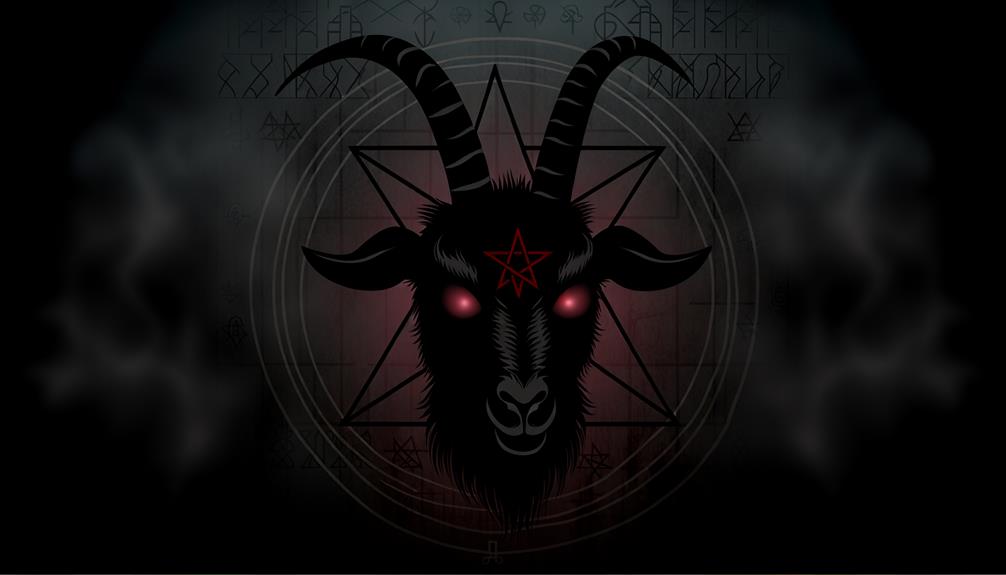
The Goat of Mendes, often associated with Baphomet, serves as a profound symbol within various occult traditions, particularly in the context of Satanism. This entity is frequently depicted with a goat's head, representing dualities such as good and evil, male and female, and human and animal.
Originating from Eliphas Levi's 19th-century illustration, Baphomet embodies a complex amalgamation of esoteric symbolism. Levi's drawing integrates elements like the pentagram and caduceus, which further imbue the figure with layers of meaning.
The Goat of Mendes is not merely a representation of Satan but a conduit for exploring deeper philosophical and metaphysical concepts. It challenges conventional religious paradigms, inviting adherents to question established norms and explore the interplay between light and dark forces.
The Alchemical Symbol of Sulfur
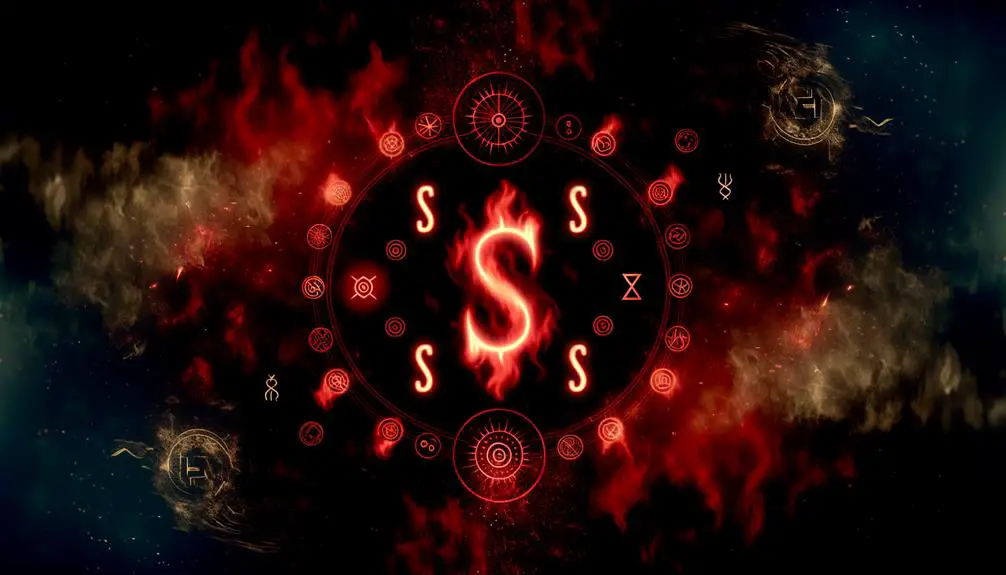
In alchemical traditions, the symbol of sulfur represents both a physical substance and a metaphysical principle. It is often associated with the fiery, transformative aspect of the Great Work. Sulfur, one of the three prime materials in alchemy, symbolizes the soul or the inner essence of matter. This element is essential for the transmutation processes, embodying the active, masculine force and the power of change.
This dual representation underscores sulfur's role as a bridge between the physical and spiritual domains, emphasizing its importance in alchemical and esoteric traditions.
- Symbolism: Represents fire, transformation, and the active principle.
- Appearance: Typically depicted as a triangle atop a cross.
- Dual Nature: Combines both material and spiritual elements.
- Historical Context: Integral to medieval alchemical practices and philosophies.
The Chaos Star
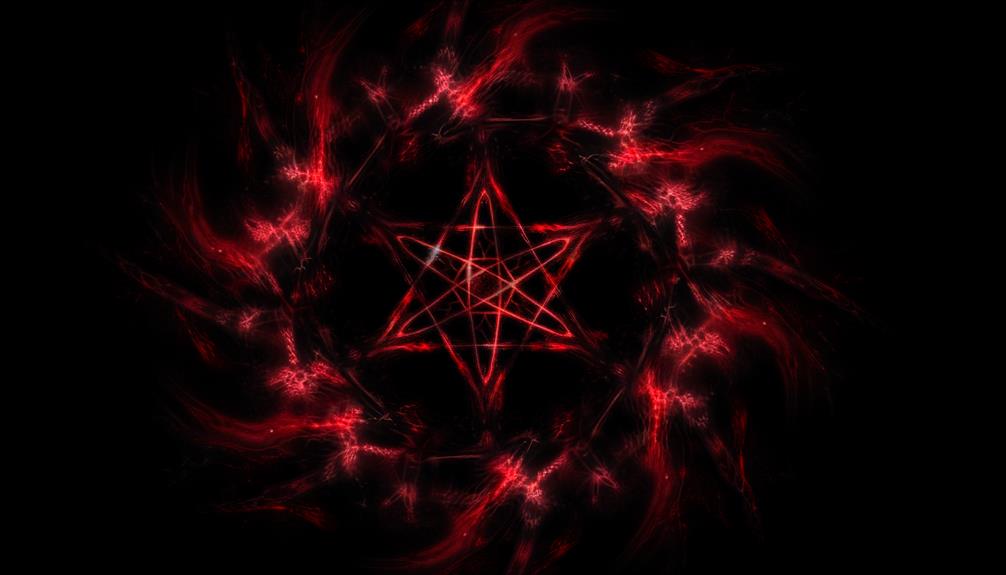
While the alchemical symbol of sulfur represents transformation and the active principle, the Chaos Star embodies a different facet of esoteric symbolism, associated with the concept of primordial chaos and boundless potential. The Chaos Star, often depicted as an eight-pointed star radiating from a central point, symbolizes the infinite possibilities emerging from disorder. This emblem is significant within various occult traditions, where it is interpreted as a manifestation of the universe's inherent unpredictability.
| Aspect | Description |
|---|---|
| Symbol | Eight-pointed star |
| Central Theme | Primordial chaos |
| Cultural Context | Various occult traditions |
| Conceptual Meaning | Infinite potential |
| Visual Representation | Radiating from a central point |
Understanding the Chaos Star requires an appreciation of its role in symbolizing the fertile ground of chaos from which all creation stems.
The Eye of Providence
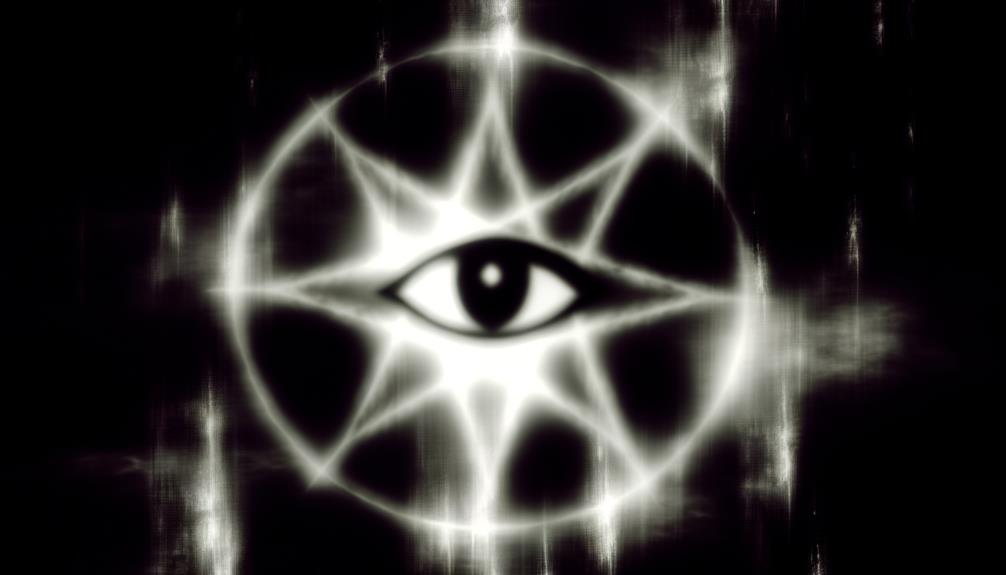
Emerging as a powerful emblem in both religious and secular contexts, the Eye of Providence represents divine omniscience and guidance. Often depicted as an eye enclosed within a triangle, this symbol has historical roots in Christian iconography where it signifies God's watchful presence over humanity. It later found prominence on the Great Seal of the United States, symbolizing the nation's reliance on divine oversight.
The Eye of Providence is also interpreted in various other contexts:
- Masonic Symbolism: Represents enlightenment and the all-seeing nature of the Masonic deity.
- Popular Culture: Frequently appears in media to evoke themes of surveillance and control.
- Conspiracy Theories: Associated with the Illuminati and secret societies.
- Art and Architecture: Used in design to signify protection and higher knowledge.
The Trident
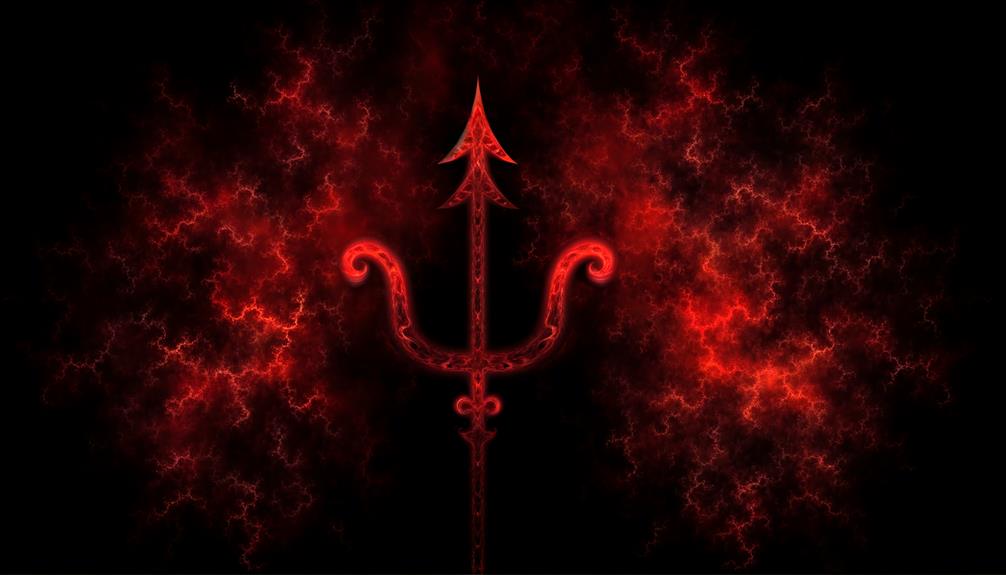
Another prominent symbol with rich historical and cultural significance is the trident, often associated with deities and mythological figures across various ancient civilizations.
In Hinduism, the trident, or 'trishula,' is wielded by the god Shiva, symbolizing his power over creation, preservation, and destruction.
Similarly, in Greek mythology, Poseidon, the god of the sea, carries a trident, representing his dominion over the oceans.
Within the context of Satanism, the trident can signify rebellion against established order and the assertion of individual power. Its three prongs can be interpreted as a challenge to the Christian Holy Trinity, embodying a counter-cultural stance.
The trident serves as a multifaceted emblem with deep historical roots and diverse symbolic interpretations.
Conclusion
In the intricate tapestry of symbols associated with Satanism, each emblem serves as a cryptic landmark, guiding followers through the labyrinthine paths of esoteric knowledge and self-discovery.
The inverted pentagram, Sigil of Baphomet, and other icons function as keys to arcane truths, each opening a unique chamber within the vast edifice of occult wisdom.
These symbols collectively form a constellation, illuminating the shadowy domains of human consciousness and challenging the conventional paradigms of spirituality and morality.





